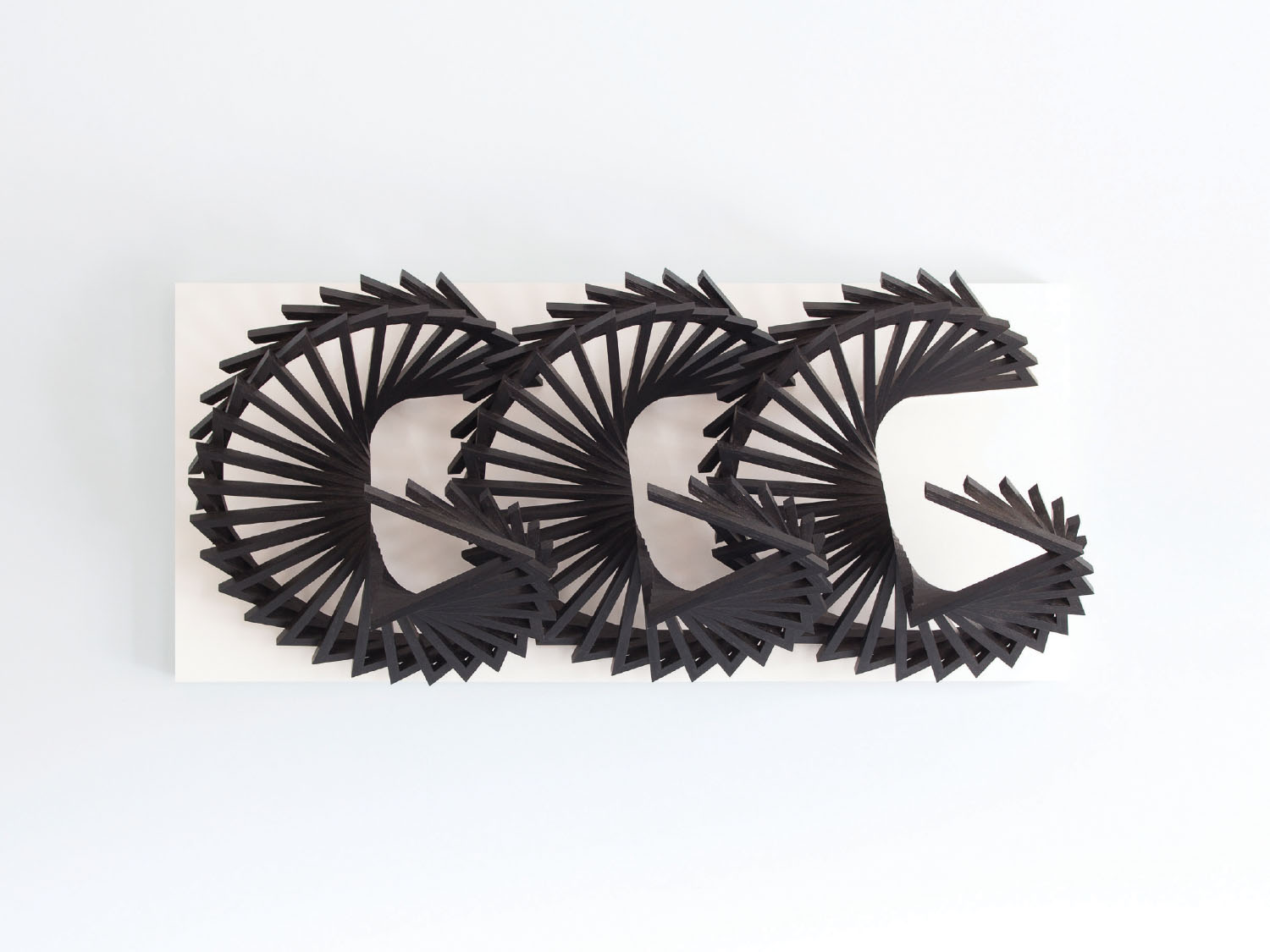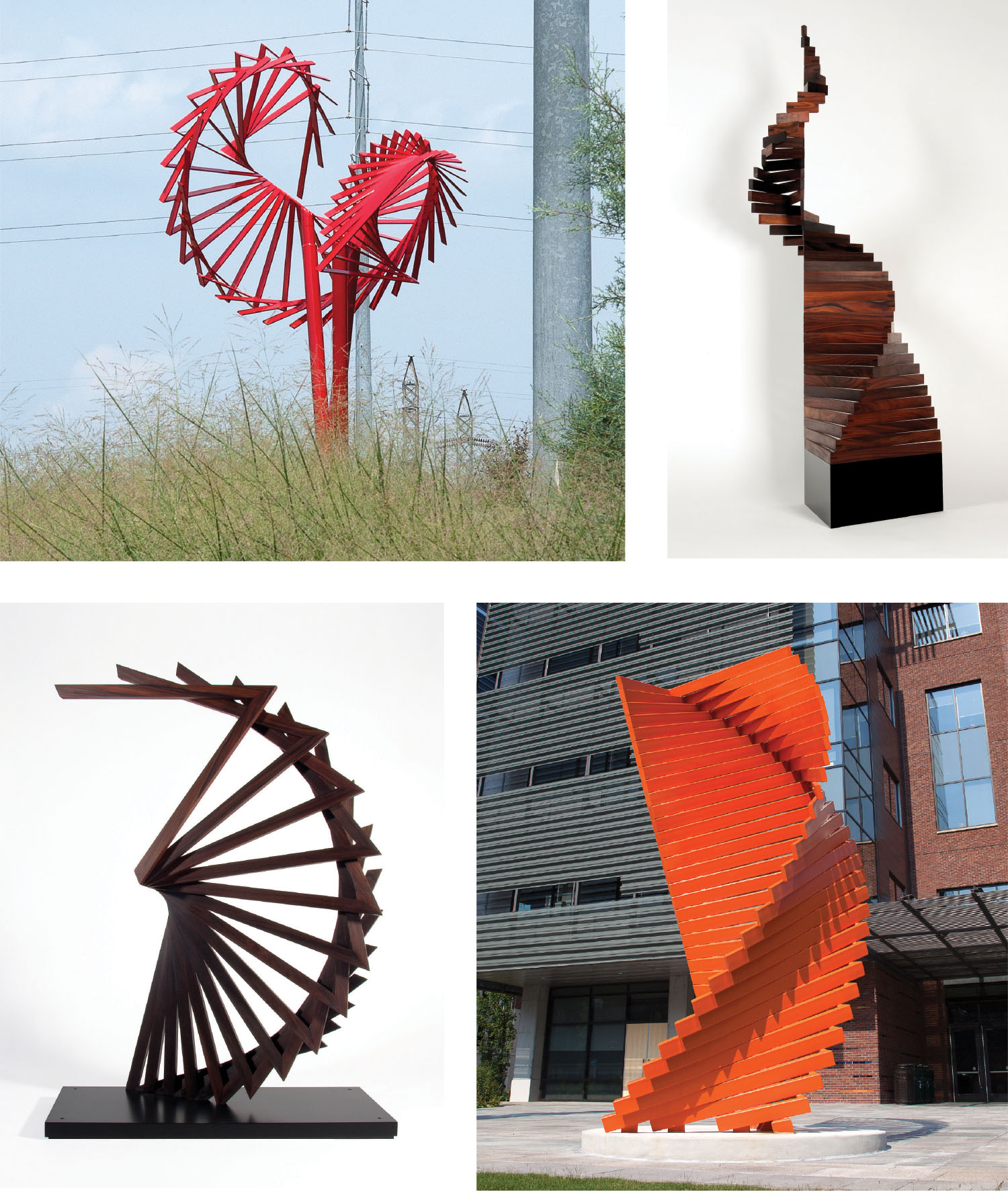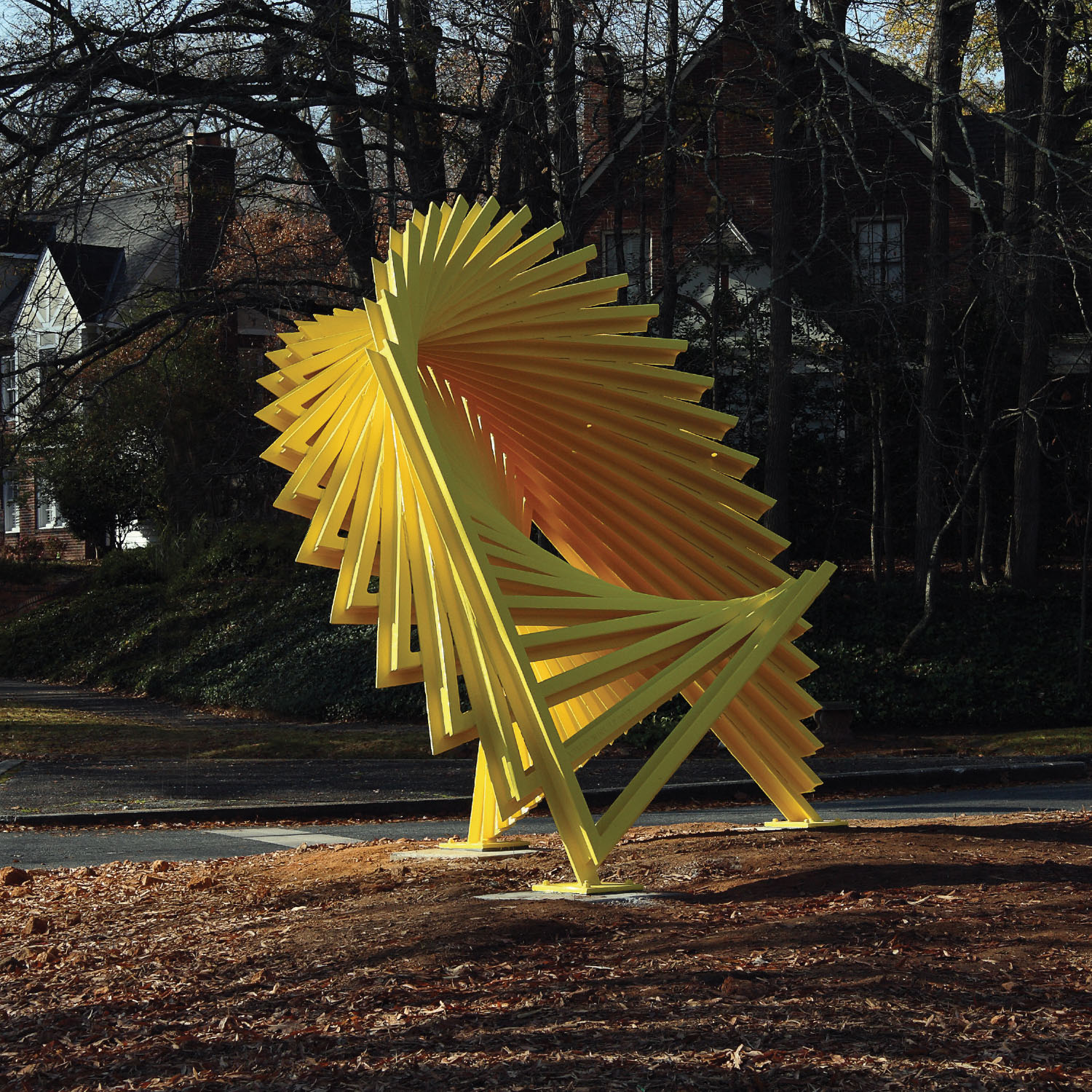
Portrait by Amos Moses
Robert Winkler sculpts both indoor and outdoor pieces, some of them spectacularly large, and many of the latter installed at universities, parks, and other public spaces throughout the Southeast. One of them is 38 feet long. Another he made from nearly 9,000 pounds of antique trolley-car track that was unearthed when the city of Charlotte repaved a boulevard. But despite outsized dimensions and heft, all of his work is defined by a sense of graceful, spiraling movement and dramatically animated form.

What materials do you use?
The big thing about my work is that the form itself is the raw material. The actual physical material comes after that, and flows out of it. Because form drives the pieces, I figure out what is the best material for that particular form.
How do you conceive the forms?
It’s mathematics and geometry and seeing what works. I’m basically a math head. I do a lot with spreadsheets and computer calculations. I work with geometry so everything scales up and down, and I use maquettes.
What’s a maquette?
That’s an Italian term for a smaller model. Most sculptors use a rough maquette, but I make modifications until it’s exactly right to specifications. In my work there is absolutely no room for error. If even one piece isn’t quite right, the whole thing doesn’t work.
Do you sometimes imagine a form that you aren’t able to physically execute?
Sometimes. One thing I say a lot is, “It seemed like a good idea at the time!” The other thing I say a lot is, “What were you thinking?” But if it almost works, I put the model where I can see it every day until I figure out why it didn’t work. Sometimes it takes days or weeks, or two, three, four, or five years to solve it. But I might wake up one morning and know what to do. Those mornings are fun — that’s the best.

Are there skills you didn’t expect to learn that you had to master in order to do this kind of work?
I’m always learning; I’m a perpetual student. Everything is an experiment and an exploration.
How do you know what the perspective will be like when you replicate the maquette on a much larger scale?
I have little cut-out people. I will look through the backs of their heads and see what it looks like at their eye level. So if it’s two feet tall and its going to be 14 feet tall, by looking through the eye of this littler person, I know what it’s going to look like to a real person.

Robert Winkler, North Asheville. Winkler will take part in the 2nd Annual Beaverdam Studio Tour, happening Saturday, Oct. 27 (10am-5pm) and Sunday, Oct. 28 (12-5pm). For more information, call 828-225-3766 or see robertwinklersculpture.com. Also: beaverdamstudiotour.com.
Hey y’all…
Its Aurora Jones…from the Williamsburg Brooklyn Days…
How are you!!
I am in Ashville for a few days!!
I would love to catch up